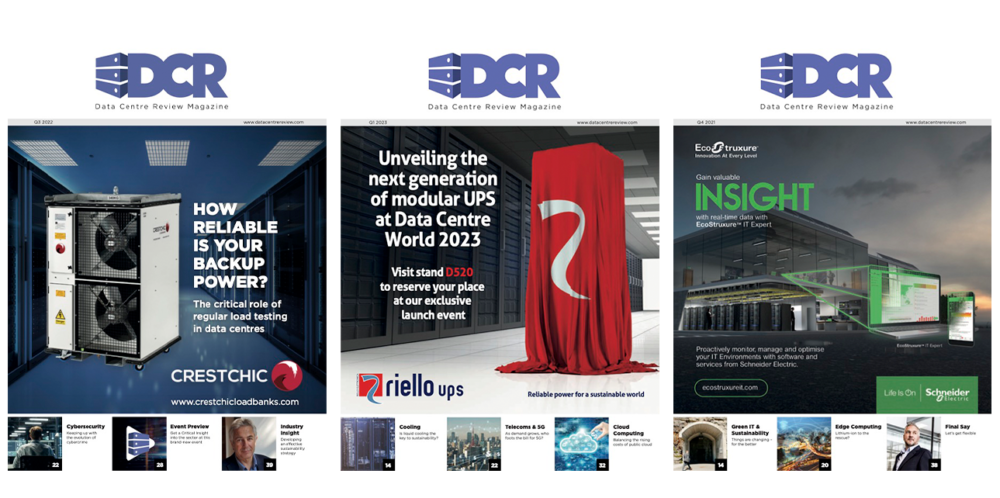Bruce Kornfeld, Chief Product Officer at StorMagic, details how combining edge processing, cloud scalability and hyperconvergence builds resilient, right-sized infrastructure for AI.
While centralised IT has long been the standard for most enterprises, the growing shift of applications to the edge is exposing new latency and performance challenges. In response, more organisations are rethinking their approach and moving computing resources closer to where they’re needed most. This trend is being accelerated by investment in AI and IoT technologies, both of which rely on real-time analysis of large datasets. In this context, the delays introduced by routing data to a distant data centre don’t meet business requirements.
At the same time, the sheer volume of data being generated is placing ever-increasing pressure on centralised infrastructure. AI- and IoT-driven applications are becoming more prevalent, each demanding immediate, localised processing to deliver accurate, actionable results. These requirements are difficult to meet when data must travel long distances for analysis.
By moving processing closer to the data source, edge computing removes the latency inherent in traditional IT models and enables AI applications to operate in real-time, regardless of location. These requirements are driving enormous change, with global spending on edge infrastructure forecast to reach $380 billion by 2028, according to IDC.
By processing data at the point of creation, whether that’s a factory floor, retail outlet, remote monitoring site, or any other edge location, organisations can dramatically reduce latency and simultaneously unlock real-time intelligence. In practice, this enables a wide range of mission-critical use cases. For instance, video feeds from AI-enabled security cameras can be analysed instantly, triggering alerts in seconds rather than minutes, and sensor data from industrial equipment can be assessed locally to identify potential maintenance issues before a breakdown occurs. Elsewhere, retail sites in remote locations are processing customer transactions without delay, helping to improve CX and minimise the service disruptions sometimes associated with existing approaches.
The benefits of a hybrid approach
While the performance limitations of cloud in remote or latency-sensitive environments are increasingly well understood, cloud services still play a vital role in most IT strategies. Moving away from them entirely, however, is neither simple nor always desirable.
For some, long-standing cloud contracts or a lack of onsite infrastructure mean there’s little immediate flexibility. Others may face practical constraints, such as limited space or power in remote locations, or the challenge of recruiting and retaining IT staff to manage new systems.
In these situations, a hybrid approach can really come into its own. Rather than replace the cloud, edge computing can complement it, ensuring critical workloads are processed locally while still maintaining access to centralised services for less time-sensitive tasks. These include the likes of backups, batch processing, analytics, and the requirements associated with development environments. In each case, cloud platforms continue to offer value but not at the expense of latency or responsiveness.
Playing an increasingly important role in these hybrid environments is hyperconverged infrastructure (HCI), which integrates compute, storage, and networking into a single system. In doing so, it eliminates the need for separate, specialised hardware and creates a lightweight architecture ideally suited to decentralised environments.
Engineered specifically for smaller sites, modern HCI systems require minimal physical space and can often deliver high availability using just two servers instead of three or more. This keeps upfront investment low and reduces energy consumption, spare parts, and ongoing maintenance. In remote or resource-constrained locations, that efficiency makes a significant difference.
Importantly, HCI is not a compromise. Virtualisation technologies ensure high performance levels, while built-in intelligence automatically balances workloads and prevents over- or under-provisioning. For IT teams, this means fewer surprises and a more predictable infrastructure that adapts to changing demands.
When it comes to deployment, generalist IT professionals can implement HCI systems without requiring specific expertise, and new applications or edge sites can often be brought online in under an hour. Once operational, centralised management tools make it easy to monitor and control systems remotely, reducing the need for onsite visits and enabling faster issue resolution.
Resilience, responsiveness, and the ability to scale
Bringing together the strengths of edge computing, HCI, and cloud services enables organisations to build an infrastructure that is both resilient and responsive. This hybrid model is not only capable of meeting today’s latency and performance demands but is also designed to scale as requirements evolve.
By combining real-time processing at the edge with the scalability of the cloud and the flexibility of HCI, businesses can support AI-driven workloads wherever they need to operate. Applications can run locally to deliver immediate insight and action, while centralised platforms continue to handle broader tasks such as long-term analytics, backups, and system testing.
This modular, decentralised approach allows infrastructure to be tailored to the operational realities of each site. It removes the inefficiencies of a one-size-fits-all model and enables smarter use of resources across the board.


